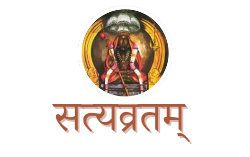A BRIEF NOTE ON THE SOURCES OF THE HISTORY OF THE KAMAKOTI ACHARYA-S
Brahmashri Nerur Shriramana Sharma
The historical details of the Kamakoti Acharya-s provided herein are extracted from various sources. While for the more recent Acharya-s the details are available from various records and traditional accounts of the Matham, the details of the earlier Acharya-s are based on three important textual sources. These are namely Punya Shloka Manjari, Guru Ratna Mala and its commentary Sushama.
Punya Shloka Manjari:
The work Punya Shloka Manjari is a compilation of verses composed about the various Acharya-s at various points of time. It was compiled by the 56th Acharya of the Peetham Shri Sadashiva Bodhendra Sarasvati. He explicitly states at the very outset of the work that it is a compilation of what mostly are old verses composed by others (about the older Acharya-s) and some new verses added by Him (about the Acharya-s who were recent to Him and for whom He could collect details from other sources).
This Punya Shloka Manjari indicates for each Acharya: how many years they were the Peethadhipati and on what tithi they attained Siddhi (i.e. their Aradhana tithi). It also provides available details about their Purvashrama (life before sannyasa) such as their name, their father’s/parents’ name, their Gotra etc.
It is to be noted that all details are not mentioned for all Acharya-s, and for some Acharya-s (see for example the 26th to 30th Acharya-s) no account of their specific activities are available. This is a clear indication that the historical details have been preserved only as they were received and no effort to embellish or add non-existent details was entertained. This is a testament to the honesty of the chroniclers of the history of the Kamakoti Parampara.
Guru Ratna Mala:
The work Guru Ratna Mala was composed by the well-known Avadhuta Yogishvara Shri Sadashiva Brahmendra. It is a stotra of the Advaita Guru Parampara starting from the Adi Guru Dakshinamurti upto Shri Shankara Bhagavatpada, and after Him of the Acharya Parampara of the Kanchi Kamakoti Sarvajna Peetham until the 57th Acharya Shri Paramashivendra Sarasvati II, the Guru of the composer. The last verse of this work explicitly states that it was composed at the request of Shri Atmabodhendra Sarasvati, the 58th Acharya, who was also a disciple of Shri Paramashivendra and a co-disciple of the author Shri Sadashiva Brahmendra.
This work, while mostly praising the sublime qualities of the various Acharya-s, also contains references to historical facts related to Them, such as well-known scholars contemporary to Them. For example the astronomer Aryabhata (CE 476-550) is referred to as the contemporary of the 23rd Acharya Shri Sacchitsukhendra Sarasvati (siddhi: CE 511); the scholar of poetry and dramaturgy Ananda Vardhana (CE 820-890) of the 39th Acharya Shri Sacchidvilasendra Sarasvati (siddhi: CE 872) etc.
Above all, the Guru Ratna Mala is an important source for the knowledge of the charitra of Shri Adi Shankara, since of the 86 verses composed on the Acharya parampara, 21 verses are about Him only, and clearly demarcate the events of His avatara such as upanayana, sannyasa, attaining Shri Govinda Bhagavatpada as Guru, composition of Bhashya-s, darshana of Vishvanatha and Vyasa at Kashi, meeting with Kumarila Bhatta, victory over Mandana Mishra, receiving the Sphatika Linga-s at Kailasa, digvijaya, reaching Kanchi, pacifying the fierce form of Devi Kamakshi and establishing the Shrichakra there, ascension to Sarvajna Peetham, establishing the Kanchi Matha, establishing other Matha-s and finally attaining Siddhi at Kanchi.
Sushama:
Sushama, a commentary of the Guru Ratna Mala, was composed by one Atmabodhendra Sarasvati, not the 58th Acharya but a disciple of the 60th and 61st Acharya-s. This author Shri Atmabodha is evidently a well-read scholar as He quotes from numerous works composed from all over Bharata, which contain details pertinent to the history of the Kamakoti Peetham.
This author corroborates Shri Brahmendra’s narrative of the Shankara Avatara by quoting from various old Shankara Vijaya-s which were available to Him at that time. Likewise, He also gives the charitra of the 38th Acharya Shri Abhinava Shankara in detail, including His ascension to the Sarvajna Peetham at the Sharada Kshetra in Kashmir and siddhi in the Himalaya-s from Kedara. He notes that many (even in the 17th century) had confused the stories of Shri Adi Shankara and Abhinava Shankara and hence muddled up the sequence of events.
This Acharya also provides numerous other details of the various other Acharya-s, which all makes the Sushama a most interesting traditional/historical work to read indeed.
Jagadguru Parampara Stava:
Jagadguru Parampara Stava was composed by the 65th Acharya of Shri Kanchi Kamakoti Pitham, Shri Sudarshana Mahadevendra Sarasvati Shankaracharya Swamigal.
Conclusion:
Due to many factors including Western influence and shortsightedness of our own people, the importance of our own native traditional historical accounts has been underestimated. While honest mistakes are always possible in such a deep thing as history, it is intellectually incorrect to presume or assert that traditional accounts are always fabricated or biased.
The history of the Kanchi Kamakoti Peetham as we know it today is especially based on the above three works at least three to four centuries old, not to mention the very much older Shankara Vijaya-s (and the Punya Shloka Manjari is only a later-date compilation of much older shloka-s). This history is also borne out by external evidence including the times of the contemporary scholars such as Aryabhata (see above), the evidence from temples in and around Kanchipuram, various epigraphical evidence, etc.
As such, the Kanchi Kamakoti Peetham has had and continues to have an illustrious lineage of Acharya-s who were and are all dedicated to the preservation of Sanatana Dharma in Bharata, and of peace and harmony in the whole world, true to their title as Jagadguru-s. It is hoped that the historical details collected in all good faith and honesty herein will serve to indicate the greatness of these Acharya-s and encourage us to travel in the Eternal Path of Dharma that they show us.
